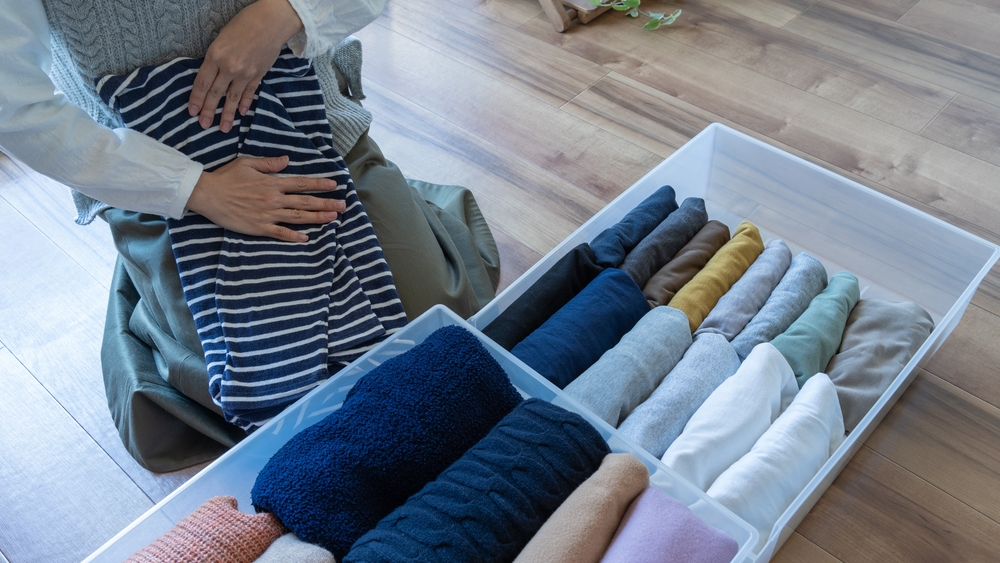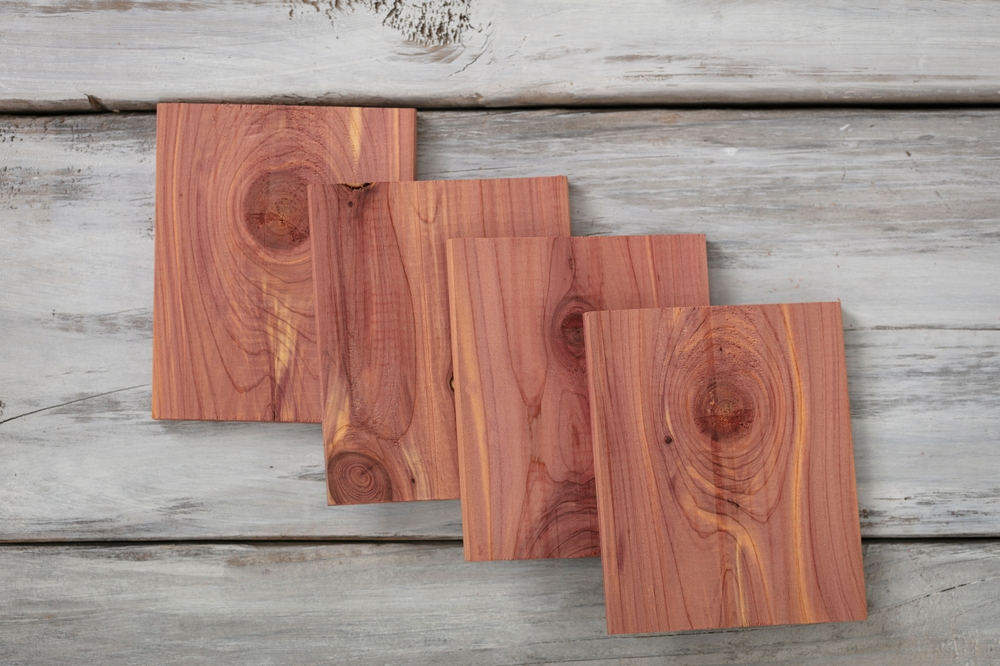
Storing clothing long-term can be more complicated than you think. That’s because many of the fibers high-quality clothing items are made from, including cotton, cashmere, silk, leather, feathers, and wool, are favored as food and nesting materials by vermin-like insects and rodents. For example, clothing moths, carpet beetles, and mice are well known to eat clothing, as well as cockroaches, rats, termites, and even crickets. If they don’t eat your clothes, mice and rats will tear them apart to use as bedding for their nests.
In other words, when you need to store clothing long-term, you need to do everything possible to protect it from critters, moisture, and temperatures that will eat holes through your suits and tear your blouses, pants, dresses, and other clothing items to shreds. To help you do that, Hide-Away Storage put together the following list of 10 top tips and hacks on how to store clothing long-term. To ensure your clothing stays in pristine condition while stored, read on!
10 Tips for Clothing Storage
1. Don’t Use Fabric Softener
Using fabric softener when cleaning your clothing before long-term storage could be tempting. After all, it makes your clothes softer and smells nice. The only problem is that the perfumes used in fabric softeners also attract insects and vermin. Therefore, it’s best to avoid fabric softener before storing your clothes long-term.
2. Wash Your Clothes Before Storing them Long-Term

Even if they aren’t “dirty,” washing your clothes before storing them long-term is always best. The reason is that the human body leaves oil and other organic materials on clothes, attracting unwanted visitors. Also, any type of food, even tiny crumbs and minor stains left behind on clothing, are also attractive to critters that can damage your clothes.
3. Dry Your Clothes Extremely Well
There’s almost nothing worse than storing clothing long-term while it’s still damp. The reason is that even slightly damp clothing is the perfect place for mold and mildew to grow, both of which can completely ruin your clothing. Experts recommend removing your dried clothing from the dryer and putting them into plastic storage containers so that even the humidity in the air can’t cause mold and mildew while they’re stored.
4. Avoid Wardrobe Boxes for Long-Term Clothing Storage
Admittedly, Wardrobe boxes are the best for moving clothing from one house to another and storing hanging clothes short-term. However, the problem is that wardrobe boxes are made from cardboard, which is highly attractive to insects and rodents. Even if they don’t eat the cardboard, mice and rats can easily chew through it and get to your valuable clothing. Insects like silverfish eat cardboard, weakening it and allowing other vermin to enter. In other words, as great as they are for moving your clothes, avoid using wardrobe cartons to store them long-term.
5. Use Large, Clear Plastic Bins to Store Clothes Long-Term
So, if you can’t use wardrobe cartons, what should you use to store your clothing long-term? The answer is large, clear plastic bins. Typically between 30 and 40 gallons in size, clear plastic bins have several advantages over wardrobe boxes. For example, they’re watertight, and insects can’t chew through them. While an ambitious mouse or rat could chew through them, it’s less likely than cardboard. Plus, you can see what’s packed inside, making it easier to find a particular piece of clothing if you need it.
6. Stay Far Away from Mothballs and Mothball-like Products
Mothballs used to be the go-to protective device when storing clothing. The problem is that most mothballs and similar products contain highly toxic chemicals like naphthalene and paradichlorobenzene. Plus, mothballs smell awful and aren’t as effective as you might think. There are several other products you can use that are far better for your clothing and your health. Speaking of which…
7. Let Mother Nature Help You Protect Your Stored Clothes

Rather than using nasty mothballs to try and protect your clothing while stored long-term, use these natural products instead.
Red and White Cedar Blocks- red cedar wood, is an excellent natural defense against bugs and rodents due to its strong aroma. The easiest way to use red and white cedar is in medium-sized blocks that you can purchase at most big box home repair stores. You can also use cedar wood chips, but with some clothing, they might get stuck in the fabric. The bonus is that the smell of red and white cedar, while obnoxious to bugs and rodents, is quite pleasing to humans.
Peppermint and Spearmint Oil- Like cedar wood, peppermint, and spearmint oil are quite aromatic, and most bugs and other vermin hate them. However, it’s important to note that you shouldn’t spray either oil directly on your clothing as it can damage the fibers. Instead, spray it on the containers you use to store your clothes.
Sachets Filled with Pungent Herbs- This last natural vermin repellent involves using sachets (aka small bags) filled with herbs like lavender, rosemary, clove, and mint. Like the other natural defenses we’ve talked about, these herbs are disliked by most creatures that like chewing on clothing. As with cedar, they also have the benefit of making your clothing smell fresh and clean.
8. Rent an Air-Conditioned Storage Unit
Very fine clothing, especially clothing made from cashmere or silk, can be damaged or even destroyed if not stored properly. Therefore, if you have a lot of clothing made from these materials, consider renting an air-conditioned storage unit. These are specialized units that, as the name suggests, protect your clothing and other items from the sweltering Florida heat.
9. Try Not to Use Vacuum Bags
One product that’s become very popular in the last few years is vacuum bags for storing clothes. These bags use reverse suction to take out all of the air in the bag, flatten the clothes inside, and thereby take up much less space. The problem is that extended compaction in vacuum bags can damage many different clothing types and create permanent wrinkles and seams. In short, avoid the use of vacuum bags unless you absolutely need them.
10. Use Silica Gel Pack to Absorb Moisture
This last tip on how to store clothing long-term involves a product you’ve likely seen when you’ve purchased new sneakers; silica gel packs. These tiny packs are filled with silica beads that absorb moisture and keep sneakers from getting damaged. They can do the same for your clothing while stored long-term, although you’ll need more than one in larger boxes.
Hide-Away Storage For All Your Storage Needs
If you need to store clothing long-term and other household items or items from your business or office, Hide-Away Storage is your #1 choice! Our storage facilities in Florida are state-of-the-art, with top security and safety features like 24/7 video cameras, electronic, keypad-controlled front gates, and on-site managers to keep a close eye on your valuable items.
Hide-Away offers clean, safe, and secure storage units at affordable prices. We also offer air-conditioned storage units in most of our storage facilities, which are perfect for storing clothing long-term. Whether you have a massive amount of clothing to store or only a small amount, Hide-Away has the storage unit to fit your needs.